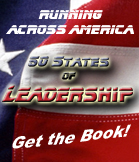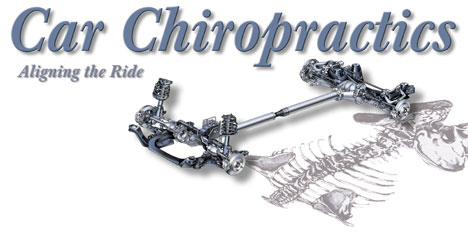|
|
|
|
|
|
 |
|
|
|
|
|
|||||
|
|
||||
|
|
|||||
Publications: Reading Eagle DriveTime: Articles
|
Aligning your ride By
Jeffrey Fazio Ever feel out of whack? Maybe the vehicle does, too. Like a human skeleton, the configuration of a vehicle’s steering and suspension framework can be knocked out of alignment by excessive stress or a sudden impact. When a person needs to be straightened out, the solution is an adjustment from a chiropractor. Similarly, when a vehicle’s geometry needs tweaking, the answer is a wheel alignment by an automotive technician. When is an alignment is needed? Jason Knowles, service technician at Bob Fisher Chevrolet Inc., Reading, recommends having the alignment checked if unusual tire wear is noticed or if the car’s steering pulls while driving. "Pulling and drifting are not the same thing," Knowles cautioned. "When a car pulls you have to use constant physical force to hold the car straight." He went on to explain that drifting is the gradual tendency of the vehicle to move across a lane while driving in a straight line, which is usually caused by uneven road surface. Macadam roads taper downward toward the edges, which affect the tracking of a car. Another thing to check is whether or not the steering wheel is centered. If a steering wheel is centered, when it is held straight the car will travel straight. If the steering wheel is not centered the car will turn while the wheel is held straight. If a customer has concerns about their alignment, the first thing Knowles does is a road test to verify that there is a problem. If a problem is noticed, he checks to make sure there is correct air pressure in the tires. Under- or over-inflated tires will throw off the configuration of a car just like a pair of bad shoes can throw off a person’s step. Next he examines the components of the steering and suspension systems to look for worn parts or excessive play. If all is fine with these parts, he brings the car in for the alignment. Like a chiropractor leading a patient onto an adjusting table, he drives the car onto the alignment rack for adjustment. "Once the car is on the alignment rack, I can check the camber, toe and caster of the car," Knowles explained. Camber was described by Knowles as being the angle or tilt of the wheel from top to bottom. He explained toe as the angle or tilt of the wheel from front to back. Caster is the angle or relationship between the upper and lower ball joints, he said. All vehicles have a unique range of acceptable adjustments based on factory recommendations. William Dubble, a Ford master certified suspension technician at Wernersville Ford Inc., Wernersville, described the different symptoms associated with problematic camber, toe and caster. He explained a problem with camber may cause a slight pull, but most noticeable would be excessive tire wear on either the inside or outside edges of the tires. Likewise, he said that misaligned toe would also cause tires to wear unevenly on either the inside or outside edges. Dubble went on to say that incorrect caster would cause a serious pulling problem in the steering. Bob Fisher Chevrolet Inc. and Wernersville Ford Inc. both supply alignment customers with a before and after copy of their alignment as most shops do. John Stone, service manager at Wernersville Ford Inc., said that since Firestone (safety issues), customers are more aware of their tires. He said they are asking more questions about tire wear. He suggested having a vehicle’s alignment checked at least once a year, even if it is only a road test by a technician. Dubble explained that not all cars need all four wheels aligned. He recommends a complete four-wheel alignment on all front-wheel-drive cars and any car that has four-wheel independent suspension. He clarified that some rear-wheel-drive cars — especially older models — do not have the capability of having the rear wheel geometry adjusted. Since the parts on the rear of these cars are not adjustable, they are either in line or damaged and need to be replaced. It is natural to expect that the human body comes pre-aligned and this expectation is particularly true of a new car. Knowles and Dubble both pointed out that new cars are aligned before they leave the manufacturer. In the unlikely event that a car’s alignment was affected during transportation, it would normally be noticed during the road test during the dealer’s inspection of the car. Although it is not as critical as a dislocated vertebrae, a bad alignment can seriously affect a car’s driveability. It is certainly something that can be ignored, like pain in the lower back that won’t go away, but in the end tattling tire wear and road wandering will tell all. |

